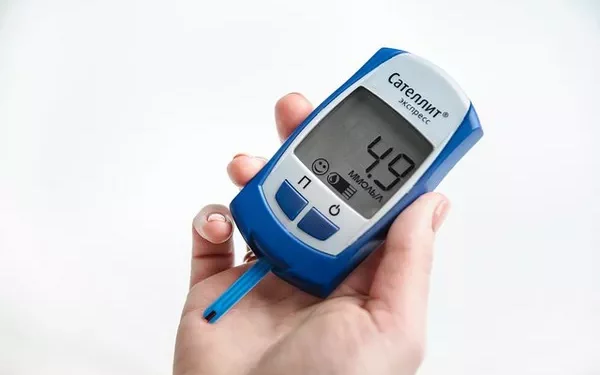As summer break approaches, many parents are planning vacations. For parents of kids with Type 1 Diabetes (T1D), this can be a bit more challenging. But with the right preparation and expert advice, traveling with a child who has T1D can be stress-free. Here are some helpful tips to ensure smooth travels for you and your little one.
Doctor Check-In: Prepare Before You Go
Before embarking on your trip—whether it’s to Disneyland, the beach, or abroad—take the time to consult with your child’s endocrinologist. This is especially important if it’s their first time going on this type of getaway.
“Reach out to your child’s endocrinologist to get personalized advice for your trip,” says Dr. Thomas Danne, Chief Medical Officer at Breakthrough T1D. For example, crossing time zones can require adjusting insulin doses. A flight to the east might shorten the day, reducing insulin needs, while a westward flight can lengthen the day, requiring more insulin.
Make sure to ask your doctor when to adjust the time on devices like insulin pumps and continuous glucose monitors (CGMs). It’s advisable to change the time only on the day of travel.
Also, stock up on T1D supplies, and ask your doctor for an extra prescription before departure. “Having a letter from your doctor explaining the necessity of your supplies can be helpful for security checks,” Dr. Danne advises.
Devices: Bring Backups
No one wants to discover their child’s pump or CGM is malfunctioning while on vacation. Be prepared by bringing backup devices.
“Contact your T1D tech company to ask about backup insulin pumps or CGM devices,” suggests Dr. Danne. Many companies, such as Medtronic and Tandem Diabetes Care, offer low or no-cost rental programs. Be sure to inquire about these services before traveling.
Also, ensure that you’re aware of how your devices should be handled during security screenings. Many pumps should not go through baggage X-rays or full-body scanners, which can interfere with the device’s electronics, according to the FDA. Metal detectors, however, are usually safe.
Supplies: Overpack and Be Prepared
When it comes to T1D supplies, overpacking is the way to go. Bring more than you think you’ll need to avoid any mishaps.
“It’s recommended to pack two to three times more supplies than you think you’ll need,” says Dr. Danne. Make a checklist of all the necessary items and check them off as you go. If your child uses an insulin pump, consider bringing syringes as a backup, just in case.
For air travel, always carry diabetes supplies in your hand luggage, and keep insulin in a climate-controlled pouch to avoid temperature fluctuations in the cargo hold. Insulated travel cases with ice packs work well for this.
Going Abroad: Plan for International Travel
Traveling internationally with T1D requires extra preparation. Request a list of local suppliers from your child’s pump distributor. This will help you find a replacement if your device gets lost or damaged abroad.
“Learn key phrases in the local language or download a translation app to ask for help in emergencies,” advises Jen Hanson, Executive Director at Connected in Motion. It’s also a good idea to have the number of local emergency services saved on your phone, and consider staying at international hotel chains that offer access to English-speaking doctors.
Pre-Flight: Monitor Glucose and Pack Snacks
Fluctuations in blood sugar are common during travel, whether due to stress, changes in activity, or atmospheric pressure. “Test your child’s glucose levels more frequently on travel days,” suggests Dr. Danne. Set reminders on your phone to stay on top of this.
Don’t forget to pack snacks that can help stabilize blood sugar quickly, such as trail mix, dark chocolate, and dried fruit. Delays are common during travel, so being prepared for any situation is essential.
TSA Screening: Navigate Airport Security
The TSA allows diabetes-related supplies, including insulin and devices, to pass through security, even in larger quantities than typical 3.4-ounce limits for liquids. It’s crucial to ensure that your supplies undergo proper screening by X-ray or hand inspection.
Make sure you’re familiar with TSA rules for diabetes supplies, which include:
-
Insulin, pumps, and CGMs
-
Glucagon emergency kit
-
Liquids like juice and liquid nutrition
-
Lancets, blood glucose meters, test strips, and alcohol swabs
The American Diabetes Association recommends bringing prescription labels for medications and devices, although they’re not required. Also, wear medical identification and carry your child’s physician’s contact info.
Be Prepared for the Unexpected
Flexibility and preparation are key. “Always have a Plan B and Plan C for managing diabetes care while traveling,” says Jen Hanson. Practicing these strategies before you need them will help you stay calm in an emergency.
A small pouch containing essentials—like a blood glucose meter, test strips, syringes, insulin, snacks, and an emergency glucagon kit—is a lifesaver for both short and long trips. “Having a compact, easy-to-carry kit ensures your child will have everything they need, no matter what,” adds Dr. Danne.
Final Thoughts:
With a little extra preparation, traveling with a child who has T1D can be a breeze. By overpacking supplies, having backups, and staying on top of glucose levels, you’ll be set for an enjoyable, stress-free vacation.
Related topics:
Maternal Diabetes Linked to Increased Risk of Autism and ADHD in Children
Pre-Diabetes Linked to Early Heart Attack and Stroke Risks, Experts Warn



























